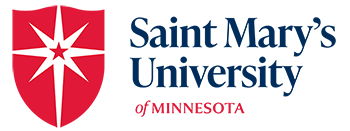Saint Mary's Newsroom / Campus Notes
Winona Campus NewsletterWeb services coverage July 2-11
The web developer and web support staff from the Marketing and Communication Office will be out of the office July 2-11, so updates to the website will be on hold until their return. In the case of an emergency between July 2-11, please indicate your timeline needs as you fill out a web request at smumn.edu/mcservices, and we will reach out to an external vendor if needed. Thank you for your patience during this period.
Fieldhouse summer hours announced
The Winona Campus Gostomski Fieldhouse and gymnasium summer hours are Monday, June 28, through Thursday, Aug. 26, 6:30 a.m. to 8:30 a.m.; 11 a.m. to 1 p.m.; and 4 to 7 p.m. (Monday through Friday only). The space will be closed July 5 in observance of the holiday.
MCA offers July Watercolor Workshops for older adults
WINONA, Minn. — Minnesota Conservatory for the Arts (MCA) will offer two Watercolor Workshops for adults ages 55 and older:
- Wednesday, July 14, from 10 a.m. to 12:30 p.m.
- Thursday, July 15, from 1 to 3:30 p.m.
In these one-day workshops, participants will explore basic watercolor techniques, including masking and wet-on-wet application, and learn about various painting supplies while connecting with one another. Step-by-step instructions will lead to creating and finishing a floral piece participants can take home. Community members are invited to sign up for one or both sessions.
Each workshop will be taught by Faye Schoen and costs $24 (which includes supplies). Visit mca.smumn.edu to register.
About the artist
Faye Schoen has taught art and craft classes for all ages from Girl Scout troops to nursing home residents and adult community education classes. As a special education teacher, she employed her art skills to motivate reluctant learners while challenging them to explore their creative side. She is a member of River Arts Alliance, Winona Art Center, and La Crosse Society of Arts and Crafts. In studying nature to paint or draw it, Schoen believes we learn to appreciate the beauty all around us and so reap the benefits (body, mind, and spirit) of making art.
About MCA
The Minnesota Conservatory for the Arts (MCA), an affiliate program of Saint Mary’s University of Minnesota, is a nonprofit community arts school offering programming in dance, music, visual art, and theatre. Classes, lessons, workshops, and camps are offered for students of all ages from birth through older adults at the Valéncia Arts Center. For more information about MCA or Galleria Valéncia, visit mca.smumn.edu, email mca@smumn.edu, or call 507-453-5500.
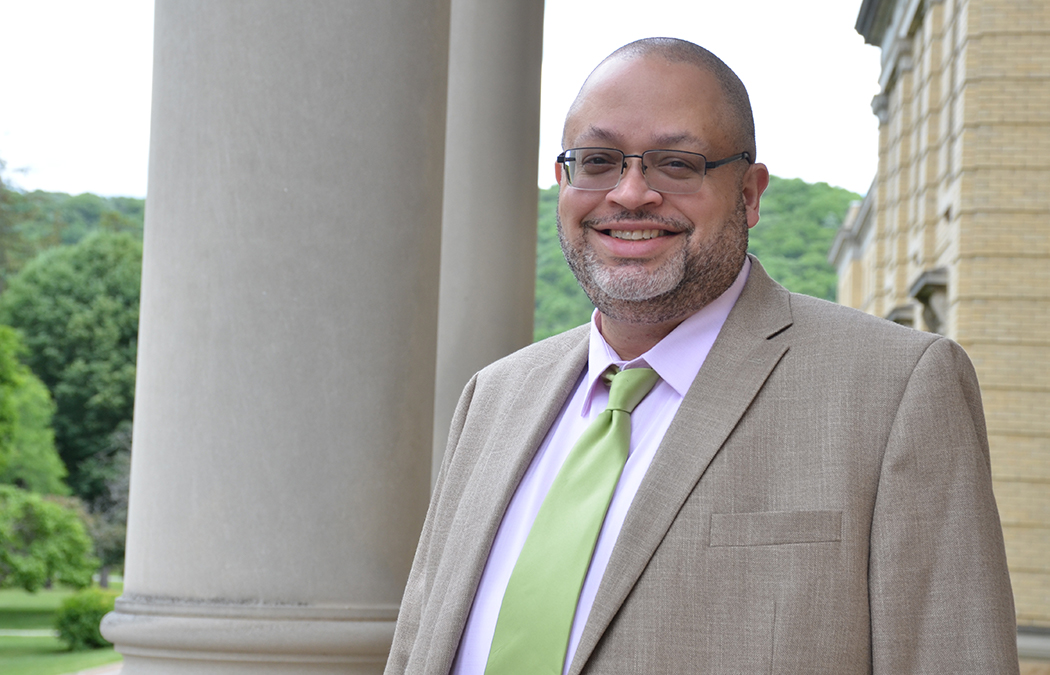
Inclusion, human dignity focus of new position at Saint Mary’s
Stepping into the newly created position of vice president for inclusion and human dignity, Leon Dixon says he’s not one to shy away from a challenge. He is ready and well-prepared to advance Saint Mary’s goal to develop and foster a more inclusive university community that emphasizes human dignity.
“Anywhere you go, universities exist to serve the students,” he said. “So that’s why I’m here — to serve them.”
A particularly meaningful title
At many colleges and universities, and other industries for that matter, similar roles hold the title of diversity, equity, and inclusion officer. For Dixon, having the words human dignity in his title is crucial.
“Usually, chief diversity officers deal a lot with demographics and try to make sure demographic needs are accommodated for and accounted for. Well, our students, our society deserves more than just demographic treatment. We’re more than just figures to check off in a box,” he said.
Dixon says in today’s society, diversity, equity, and inclusion can be “loaded words” that can lead to fractures among people. However, he says people can’t disagree when speaking about human dignity.
“Human dignity, that’s a God-given right. It’s not a mandated right; it’s not written in by law. This is something that God mandates — that everybody is treated with dignity and respect. You can’t divide that,” he said. “I don’t care what faith you practice … We all believe that.”
A year of pain and division
Discussions of inclusion and diversity have become more prevalent, and more sensitive in the last year after high-profile killings of Black men and women at the hands of law enforcement, as well as the evidence pointing to vast disparities in everything from health care to jobs to the economic impact witnessed throughout the COVID-19 pandemic. However, Dixon sees the current climate as an opportunity to lean into dialogue and change.
“I really believe the only way you address these kinds of conversations, these kinds of issues, is to actually have conversations,” Dixon said. “Once we get to that place where we feel as though we have to voice our opinion, whether it’s in the affirmative or the negative, it’s still a good place to be, because that’s where the learning comes.”
Dixon says the discussions and exchange of opinions has to be continual for sustainable change to happen.
“You know, your opinion is yours, and you can get mad and be like a kid on the playground, ‘I’m taking my stuff and going home.’ But as long as you come back to the playground again tomorrow, that’s what is most important, because sooner or later, we’re going to get past the emotional part and really get into who and what the conversation should be about and who we want to be.”
Being mindful of the last year, as well as the recent recognition of Juneteenth, can be a way to continue to move the conversation forward, Dixon said.
“What it does give us is an opportunity to actually have a conversation about how we can prevent this from happening again. How can we recognize and lift up those who are feeling marginalized? How can we find a way for law enforcement and communities of color and communities of low economic means to coexist? We need systems of law and order for a society to function … but we also need law enforcement to work with people they are serving instead of controlling them.”
Building a more inclusive campus and university
Building a hospitable university can take many shapes, but Dixon says having a community that is close and intentional in its actions is vital.
“We’ve got a lot to do, we have a long way to go, but we have to start somewhere,” Dixon said. “And it starts with us being intentional about our actions, intentional about conversations, and intentional about building a better place.”
Adhering to the school’s Lasallian Catholic tradition, which places an emphasis on concern for the marginalized and social justice, will also play a role in conversations about inclusion and human dignity.
“We’re Lasallian Catholics, it’s not an either or proposition,” Dixon said. “At the end of the day, we’re all guided by the Holy Spirit that keeps us moving and pushes us forward.”
He says he is encouraged that he believes most people in the university community are not afraid of changes that may need to be made.
“That’s a beautiful place to be in, because so often we know change is hard on most people,” Dixon said. “That makes my job easier. But more importantly, it creates an environment so these conversations can be the catalyst for what we can become.
However, to be successful, everybody in the university community needs to take part in the work.
“When we do inclusion work on campus, it’s important that everybody knows they have a stake in this. While your background or demographic profile are important, every person comes with a unique and particular history. All of these aspects of each person’s life are necessary ingredients for a vibrant and hospitable community where all are welcome and supported,” Dixon said.
The work begins
To implement change, Dixon will engage the entire university community. He plans to listen and assess before prioritizing the work that needs to be done.
“I need to hear firsthand where the problem areas are, or where the opportunity for growth is, or just what everybody is feeling,” Dixon said. “I need to know this because you can’t craft a plan for the people if you’re not with the people and doing it with love for the people.”
Measures of success
How students discuss their experiences at Saint Mary’s will be the best way to gauge whether the environment is inclusive.
“What we don’t want is that statement where (students) say, ‘This isn’t the place for me because I don’t feel valued or respected … And it can be just one student and we fail. These are things I don’t ever want to hear. These are the things that are non-negotiables,” Dixon said. “I’m here to help create an environment where we can all thrive.”
“If any student ever feels they don’t belong for reasons other than being homesick, we’ve got to work harder. I’ve got to work harder.”
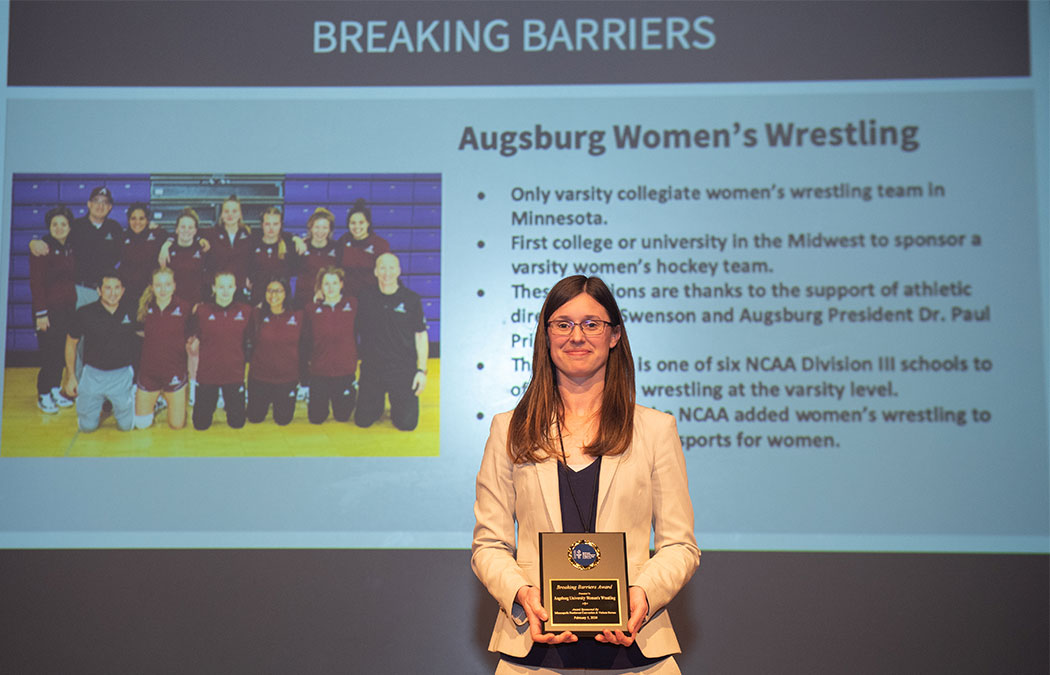
DBA student applies coursework to her career
At Augsburg University in Minneapolis, where she has worked since 2008, Kelly Anderson Diercks is the associate athletic director.
At home with her husband, Matt, she has three children, Andi, Bo, and Riley.
At Saint Mary’s University, she’s working towards a Doctor of Business Administration (DBA) degree, studying job satisfaction for women later in their careers.
And she gets it all done with what a faculty member describes as “1000 volts of positive energy.”
Diercks says what she learns in the DBA program has been immediately applicable to her work in athletics, especially her role as the deputy Title IX director for her department.
“The Saint Mary’s DBA faculty encourage students to research, write about, and do projects during our coursework that can either directly apply to our dissertation or to our professional work,” Diercks says. “Being someone who works in higher education, and intercollegiate athletics specifically, I was often interested in topics that were very different than my classmates, and the DBA faculty were incredibly open to my explorations of these interests. I was even able to write a paper on the economics of Title IX, and it ended up being one of the most enjoyable papers I’ve ever written.”
While she researches late-career women leaders for her dissertation, Diercks is also committed to empowering the next generation of women who work in sports. She is on the organizing committee for Minnesota’s National Girls and Women in Sports Day and a member of the group Women Leaders in College Sports, and has also previously served as chair of the NCAA Ethnic Minority and Women’s Internship Selection Committee.
Diercks chose Saint Mary’s because of the in-person classes and the management and strategy track, and says she is grateful that the program “continues to push me to be a stronger writer and critical thinker.”
Photo caption: Dierks accepts the 2020 Breaking Barriers Award on behalf of Augsburg University women’s wrestling for Minnesota’s National Girls and Women in Sports Day.
By Maura Sullivan Hill
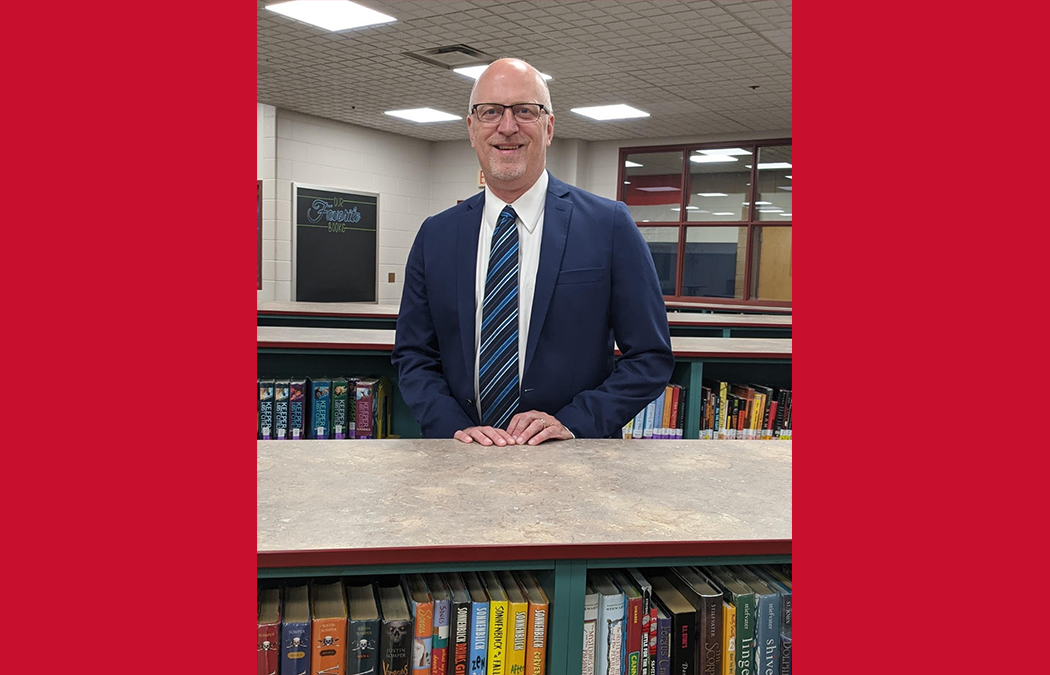
Saint Mary’s graduate follows his own advice, lands superintendent position
By Tom Brandes
Mike Neubeck D’05 isn’t sure what his ideal job would be, but it would definitely involve helping people and having fun. The longtime educator and administrator will undoubtedly strive to do both those things as he begins his new job as superintendent of Byron Public Schools in Byron, Minn.
Neubeck has worked at a number of public and private schools throughout the Twin Cities area over the past 30 years; at his first teaching stop at Epiphany School in Coon Rapids, he told his seventh- and eighth-grade students to follow their dreams. A few years later, Neubeck took his own advice and left education to become a professional baseball umpire. Later he resumed his education career, but worked as an umpire for the St. Paul Saints for 23 years.
“Helping people and having fun need to be part of anything I do. Some days it’s not fun and it depends on what happened in the lunchroom that day,” says Neubeck. “When I returned to teaching, I received my master’s degree from the University of St. Thomas and my K-12 principal certificate from Saint Mary’s because I wanted to become a principal so I could help others.”
After finishing his licensure work, a friend who also went through Saint Mary’s certificate program suggested they get their doctoral degrees in education. With another friend from the licensure program, plus a fourth they met early on, the foursome went through Saint Mary’s Education Doctoral Degree program in five years, taking most of their classes together as a mini cohort. One of the four, Joe Libby D’05, will also be a first-year superintendent (Sibley East) this fall.
“I really liked the flexibility of Saint Mary’s Education Doctoral Degree program, topics on leadership, and how they balanced classwork with our work schedule,” Neubeck said. “The instructors were awesome, and the highlight of the program was the people I met in class. It was great to build relationships and learn what other districts are doing.”
For Neubeck, the “why” of education is helping kids and families, and the reward is seeing them be successful. Eventually, Neubeck realized he could help a whole community if he became a school district superintendent. When he applied for the superintendent position with Byron public schools near Rochester, a woman in the community reached out to tell him it’s a great area and to contact her if she could help.
“She saw my name on an interview list and realized I was her seventh-grade teacher at Epiphany School. What a coincidence,” says Neubeck. “I asked how her kids were doing in school, how they liked the school and district, and if they feel they belong. I want to help people feel they belong and aren’t just part of the school.”
Neubeck is excited about his new job, describing Byron Public Schools as a growing and very progressive 2,300-student district with four schools. The schools provide a pathway for students’ career interests, including medicine, business, industrial, law, police and fire, and offer mentors and outside experience. The district also offers community service options that teach the value of giving back to the community.
In another coincidence, the Byron superintendent Neubeck will replace, Dr. Joey Page, also received his Ed.D. from Saint Mary’s. While he’ll miss being in the classroom, Neubeck’s office is in the district office building that also houses the pre-school program, so he gets to “hang out with preschoolers.” Neubeck admits he doesn’t know what he doesn’t know, but believes Saint Mary’s has prepared him well.
“I’d absolutely recommend Saint Mary’s. My coursework really challenged me to reflect on where I was as a leader and what kind of leader I wanted to be,” Neubeck added. “I really enjoyed my experience at Saint Mary’s. It helped me get where I am today and I look forward to putting it into practice as district superintendent”
In the news
Dr. Kate Soucheray, a Catholic author, speaker, former therapist, and Saint Mary’s alumna, spoke about an upcoming multicultural sensitivity training program she is hosting at Saint Mary’s Twin Cities Campus on Relevant Radio. Dr. Soucheray received her master’s degree from the Marriage and Family Therapy program and her Doctorate in Educational Leadership. Hear more about her upcoming programming, which she has also invited our new vice president for inclusion and human dignity, Leon Dixon, to also take part in planning. Her portion is second on the program lineup.
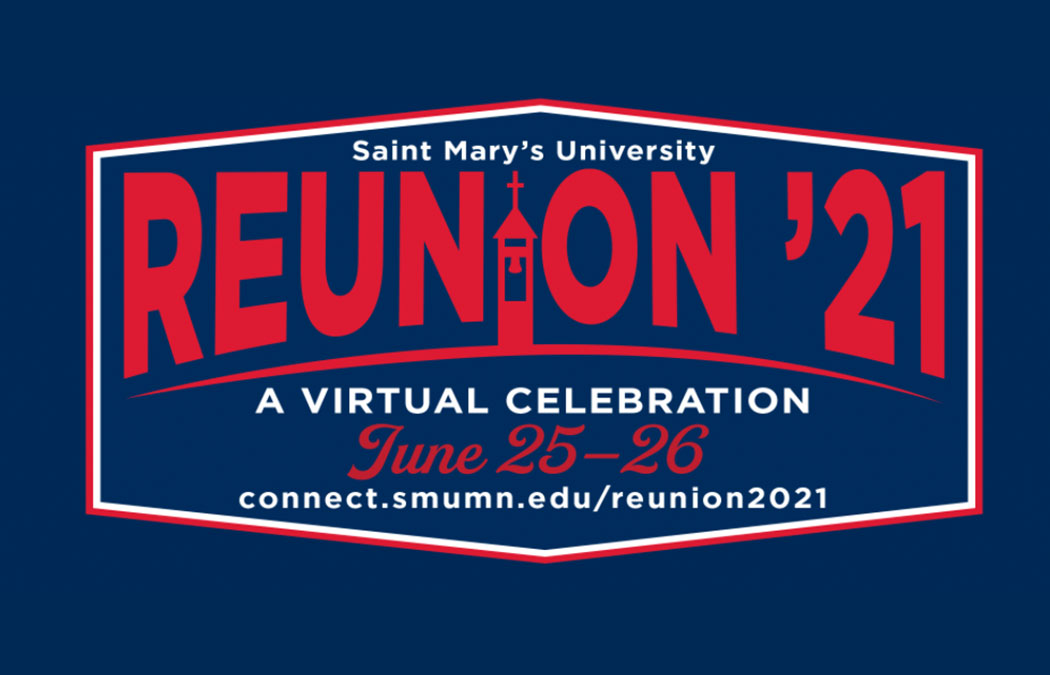
Reunion Weekend 2021 is June 25-26
This Friday and Saturday, Saint Mary’s University will celebrate Reunion Weekend 2021.
To follow state and federal COVID-19 guidance, the event will not be held on campus this year and will be held virtually instead.
The online event offers plenty of ways to connect with fellow alumni, including anniversary and memorial programs for the classes of 1970 and 1971, numerous campus tours, an art session, and the alumni awards ceremony.
Alumni wanting to attend the event can register online. We hope you will consider joining the virtual celebration of Saint Mary’s and its alumni to maintain those valuable connections.
Web redesign and brand refresh launches
The Marketing and Communication team is excited to announce the launch of a brand refresh and website redesign project to support our strategic plan, Building a Future Full of Hope 2025. This initiative supports each of our strategic plan goals, with significant impact on Goals 1 and 2: Live our Lasallian Catholic Heritage and Grow Enrollment.
We have recently brought on an external branding and web design firm who will partner with us over the next year. The project has two stages, and we will ask for the participation and support of faculty, staff, students, and alumni throughout the process to ensure the outcomes are successful.
Part 1: Brand refresh
Great brands have a clear, consistent vision and understanding of what makes them different from the competition, and we are taking the time to ensure we have a clear, consistent, and compelling brand that touts our uniqueness and relevance, makes a lasting impression, and drives engagement.
The brand refresh affords us an opportunity to engage the university in review of our mission, vision, core values, key messages, and value proposition. A key component of branding is our brand voice, the personality, emotion, and sensibility we use in all our communications. It includes not only the words we use, but the images we create with those words. Our key messages and audience needs inform our voice. How we speak, what we say, the photos, videos, and words we use must be consistent, clear, and compelling to those we are talking to and engaging with.
To this end, our brand refresh will include an assessment of messaging and tone, setting a strong brand foundation and value proposition, and updating our look and feel (graphic standards such as fonts, colors, and logo usage). We will develop a brand resource guide, templates, key messaging, value proposition, and other deliverables to help each of us become brand stewards.
The discoveries from this part will inform the direction of part 2 of the project, the website redesign.
Part 2: Website redesign
As the website is Saint Mary’s No. 1 channel of communication with our many audiences, particularly prospective students, it is imperative for it to be timely, well-organized, and filled with compelling and informative content that is accurate and consistent.
To that end, the university is undertaking a web redesign project that includes:
- Developing a responsive, mobile-friendly site.
- Creating improved, clearer, and shorter paths to conversion through intuitive navigation and organization.
- Enhancing the visual appearance of the site with a modern and appealing design.
- Developing compelling content, including multimedia, through planning and calendars.
- Improving accessibility.
- Incorporating tools and technology to identify key pathways to conversion, and making decisions based on user behavior.
Each month, we will provide you with a status update on the work done to date, and next steps.
What has been done so far
Our team has been busy since last fall preparing for this project:
- Website redesign consultative committee established, representing key partners who rely on a quality website to meet division and larger university goals. The committee’s role is to provide insights and perspectives to inform the website redesign, and to serve as advocates and information sources for the redesign within their departments.
- Request for proposal created and offered to three external partners. This request for proposal detailed our needs for both the website redesign and brand refresh, expected timeline for completion, and goals of these integrated projects.
- Two prospective partners submitted responses, and members of the consultative committee reviewed and provided input. Marketing and Communication leadership interviewed both prospective partners and chose the partner most closely aligned with our needs, goals, budget, timeline, and culture: Modern Climate.
- Current site audit and competitive analysis.
- Initial sitemap created to guide the website redesign, informed by Google Analytics data about user demographics, most visited pages, exit pages, etc.
Highlights of next steps in June and July include:
- Focus groups and surveys for both website and brand including current undergraduate and Schools of Graduate and Professional Programs students, prospective students, alumni, faculty, and staff.
When will the new site be live?
Our current estimated public launch of the brand refresh and new site is by late spring 2022. We will continue to send out monthly updates that reflect our most current launch estimate.
As always, we appreciate all the thoughtful questions, feedback, and positive support from the community on the project thus far. Lots more to come! Please let us know if you have any questions.
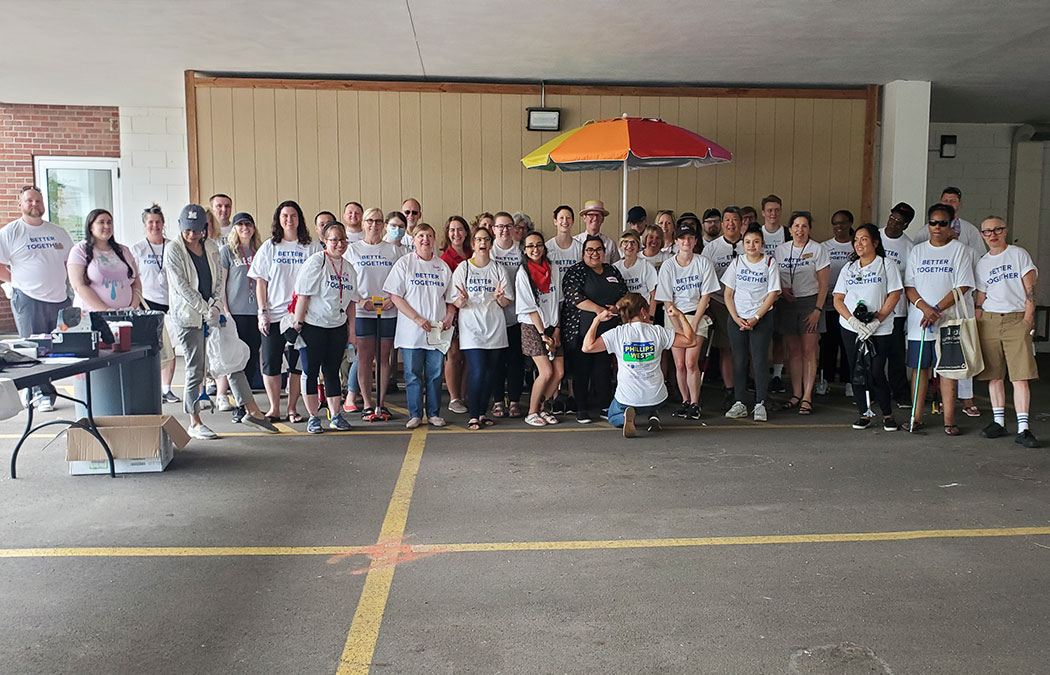
Staff and faculty participate in Phillips West community cleanup
On June 17, I was pleased to participate in the We Love Phillips West neighborhood community cleanup. I joined about 30 other staff and community members of our Twin Cities Campus to invest in Phillips West.
After breaking up into small groups and following maps to designated territories, we picked up trash, bottles, a few chicken bones, and even some coins. My small group filled our bags before returning to campus, enjoying the warm summer day to boot. The appreciation we heard from community members was striking; from people honking their horns and hanging out their car window to shout thank you, cyclists shouting praise, to neighbors on their porch conveying their enthusiasm.
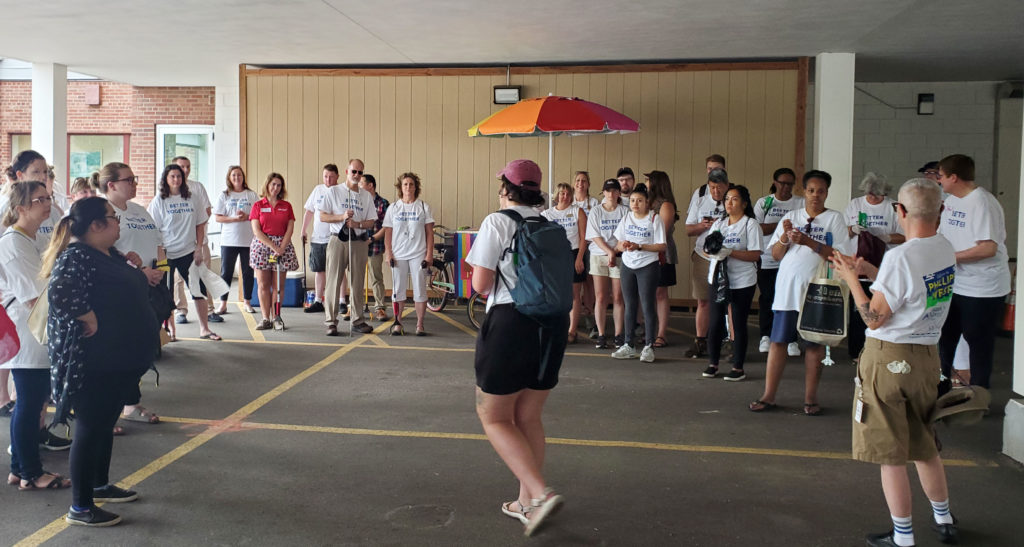 Staff participating were treated with swag such as shirts, mementos from the sponsors of Saint Mary’s and Ebenezer, and frozen treats. Not only did we invest in the community, we also got to meet up with staff new and old outside our own work groups and departments. As I cross my nine year employment anniversary, I’m excited to see our Twin Cities Campus continue outreach to be both in and of the community, continuing in our traditions such as Christmas caroling to the surrounding retirement communities and National Night Out.
Staff participating were treated with swag such as shirts, mementos from the sponsors of Saint Mary’s and Ebenezer, and frozen treats. Not only did we invest in the community, we also got to meet up with staff new and old outside our own work groups and departments. As I cross my nine year employment anniversary, I’m excited to see our Twin Cities Campus continue outreach to be both in and of the community, continuing in our traditions such as Christmas caroling to the surrounding retirement communities and National Night Out.
My Lasallian education and the Lasallian Honors program at Saint Mary’s emphasized our values of servant leadership. It warms my heart to have the opportunity to continue our mission both in the classroom and as employees. Thank you to Mira Klein, organizational development director of Phillips West Neighborhood Organization, our neighbors at Ebenezer, and our administration, including both Gena Bilden and Daniela Guillen for their coordination.
‘Your Shot to Summer’ COVID-19 vaccine incentive program
Governor Walz launched the ‘Your Shot to Summer’ vaccine rewards campaign encouraging COVID-19 vaccinations by July 1. The first 100,000 Minnesotans ages 12 and older who get their first COVID-19 vaccine dose between May 27 and June 30 will be eligible to choose a reward of their choice from a wide-ranging list of options, including state parks passes, fishing licenses, and tickets to various summer attractions — including the Minnesota State Fair. Minnesotans can learn more, verify that they received their dose, and choose their preferred vaccine reward at mn.gov/covid19/summer. To find a vaccine location near you, go to vaccines.gov.
Recognizing employee service and retirees [video]
As has been our tradition, Saint Mary’s University of Minnesota honors both retirees and employees with milestone service awards each year at a spring employee service award event. Because of COVID-19 safety requirements this past spring, we once again needed to replace our live events with a single virtual one.
Our virtual celebration includes announcement and recognition of employees who’ve achieved 5-year service increments, and a celebration of this year’s retirees. This year, we honor those with service from 5 to 35 years, as well as the following retirees: Paul Frosch, Michael Charron, John Anderson, Sherry Boynton, Ruth Torstenson LeMasters, Ann Jaques-Klingmann, Elizabeth Childs, Rob McColl, Preston Lawing, Ellen Bergler, Dr. Kenneth Solberg, Laurie Haase, Dr. David Sokolowski, Dr. Paul Weiner, and Dr. Ray Faber.
View this year’s virtual event and join us in celebrating this year’s honorees.
Fiscal year 2021-22 budget update
The university budget for fiscal year 2022 was adopted by the board at their May 2021 meeting and includes investments in many areas critical to Saint Mary’s progress to achieving the objectives set forth in the strategic plan, Building a Future Full of Hope 2025. This announcement outlines significant funding decisions as well as new technical elements incorporated in the new fiscal year’s budget.
While university operations are planned to have a deficit of $2.5 million in fiscal year 2022, which will be funded by excess endowment draw, it is imperative to make judicious commitments now which will preserve the quality and enhance the relevance of Saint Mary’s to our students, faculty, and larger community. In addition to funding strategic initiatives and supporting core infrastructure (as outlined below), the budget also contains operating contingencies to allow for real-time adjustments as circumstances may dictate.
The key fiscal year 2022 budget initiatives funded are:
- Restoration of a full 6.5% university contribution to the pension program, effective July 1, 2021.
- A salary raise pool for employees, including adjunct faculty, anticipated to be effective Jan. 1, 2022. (Details to be finalized this fall.)
- Support for new academic programs, including:
- three professional certificates (global human resources and two in cybersecurity)
- development of two new bachelor’s completion programs (applied psychology and social work)
- a four-year undergraduate degree in pre-licensure nursing
- the transition of the M.S. in Nurse Anesthesia to a doctoral level program
- Infrastructure investments, including:
- Faculty professional development, especially in the area of online course delivery
- Support of academic programs, including library resources, lab safety management, and further deployment of planned learning management system functionality
- Expansion of student services, especially for the Schools of Graduate and Professional Programs population
- Reallocation of resources to bolster in-house coordination of brand and program marketing
As noted over the previous several months to many different leadership groups, Saint Mary’s is in the process of moving to a new budget methodology, a modified form of a responsibility center management model. This will better support the university’s strategic initiatives by incentivizing beneficial growth. More information will be forthcoming in late October when we begin development of the fiscal year 2022-23 budget draft.
The most immediate and visible effect is a change in budget timeline. Contrasting with prior years where the university budget was not finalized until after fall enrollment census data was available, as noted above, the board of trustees adopted a university budget for fiscal year 2022 prior to the start of the fiscal year (June 1, 2021). This will be the budget timeline moving forward to better facilitate annual and longer-term planning.
Subsequent to the board of trustee action in May, departmental budgets for fiscal year 2022 have now been loaded. They reflect approved reallocations, updates to personnel rosters and university-wide expenses, as well as new allocations for strategically aligned departmental requests approved during the fiscal year 2022 budget cycle. Unit leaders with budget access privileges are encouraged to review their area budgets via the online report available through the faculty/staff portal or through management viewer. Please note, that while operating contingencies now afford some buffer, significant fluctuations in enrollment may require additional adjustments to departmental budgets.
New budget elements that will affect and be visible to applicable units:
- Academic Investment Fund (“AIF”) allocations: These temporary allocations generally provide seed-money for new program launches, and funding will be replenished by tuition revenue as programs grow to maturity. The allocations will be reviewed and adjusted as necessary on an annual basis, and, if applicable, converted to ongoing budget allocations with the provost’s approval.
- AIF budget allocations will appear in new Accounts 7090 (for personnel) and 7999 (for non-personnel items).
- Transactions funded by AIF allocations should not occur on Accounts 7090 or 7999, but rather on the natural expense account which most closely matches the nature of the expenditure.
- One-time (1x) allocations: To support temporary special purpose expenditures, such as time-limited initiatives or purchases of certain equipment. In general, these allocations will be zeroed out in the next fiscal year.
- Allocations will appear, as applicable, in Accounts 7095 (1x Personnel costs) and 7997 (1x Non Personnel costs).
- Transactions funded by AIF allocations should not occur on Accounts 7095 or 7997, but rather on the natural expense account which most closely matches the nature of the expenditure.
